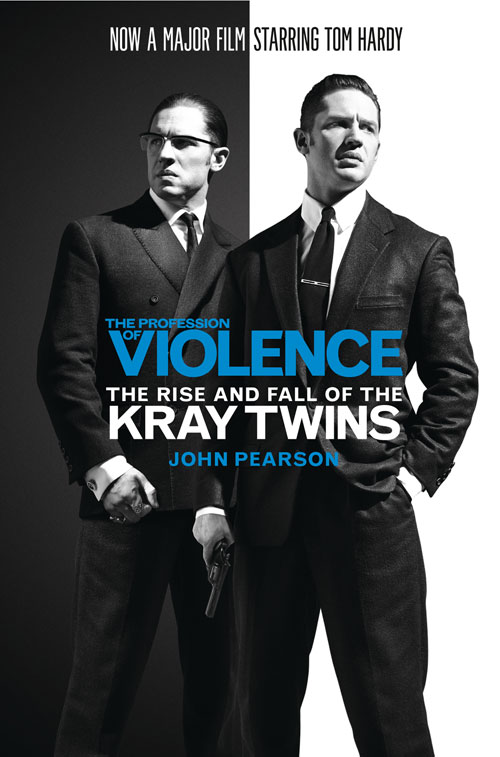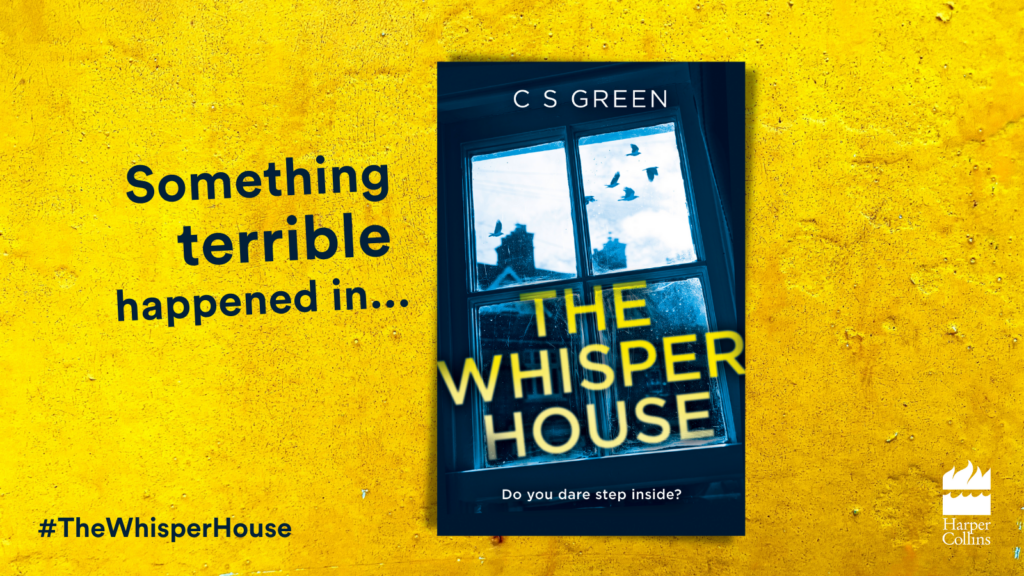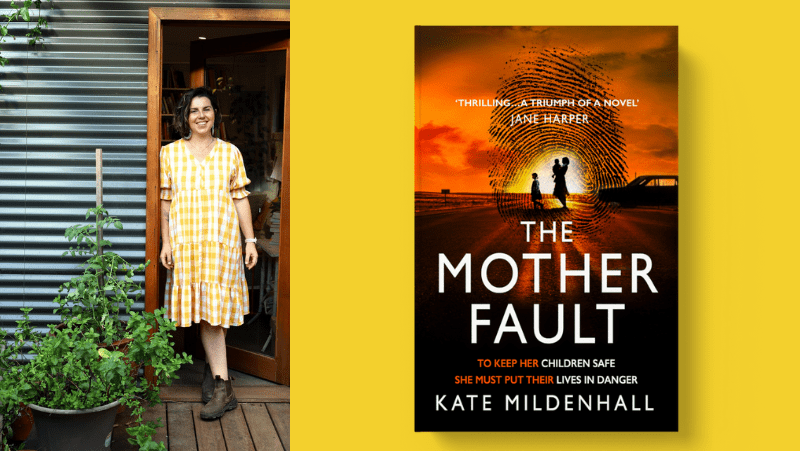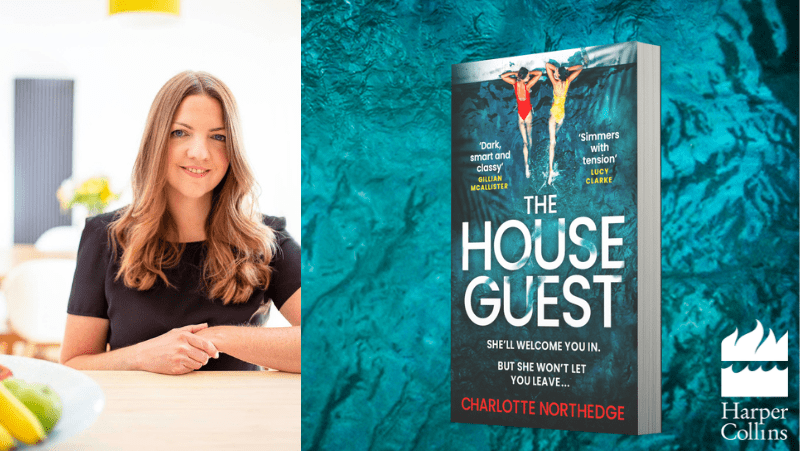 Memory tells me that I’d just had my thirty-seventh birthday when I met the Krays in that improbable stately home which I describe in my introduction to The Profession of Violence, and agreed with two criminals I had never met before to write their biography for a film they desperately wanted. The calendar on my desk also reminds me that I’ll be eighty-five next month, and that I’ve stayed alive long enough to see Tom Hardy’s great performance as both Ron and Reg Kray in Legend, which is based upon my book. The twins would have loved it, but unfortunately they, and their brother Charles, failed to make it.
Memory tells me that I’d just had my thirty-seventh birthday when I met the Krays in that improbable stately home which I describe in my introduction to The Profession of Violence, and agreed with two criminals I had never met before to write their biography for a film they desperately wanted. The calendar on my desk also reminds me that I’ll be eighty-five next month, and that I’ve stayed alive long enough to see Tom Hardy’s great performance as both Ron and Reg Kray in Legend, which is based upon my book. The twins would have loved it, but unfortunately they, and their brother Charles, failed to make it.
I suppose that had I known that Ron was dangerously homicidal, and that the two of them had murdered the unfortunate Jack ‘the Hat’ McVitie barely two weeks before I met them, I would have refused to have anything to do with them. But the truth is that I rapidly became fascinated by them, and looked on whatever risks I was running as part of a deal that most young writers would have dreamed of.
At the same time, I would guess that it must have been my total ignorance of the world of organised crime that convinced them I was harmless, and helped me gain their confidence. They were obviously wary over what they told me, but it was during those precious seven months I spent with them before they were arrested that I got to know the family, the members of ‘the Firm’, and picked up almost all the background knowledge that I used in the book that followed.
At this stage Violet Kray was still the proudest of cockney mothers, and surprisingly frank about ‘her boys’, explaining in loving detail the origins of Ron’s serious mental problems, and how she had taught his brother Reg that whatever happened he must always be there to look after him. I also discovered that my best guide to the old criminal underworld of the East End was her badly treated rag-and-bone man husband, Charles Kray Sr., who during his period as a long-term deserter from the army had got to know all the local villains he relied on to protect him from his enemy, the police. I found him excellent company, and ended up surprisingly fond of him – which the twins, alas, were not.
As for the twins themselves, once I got to know them, they were quite open to me about their lives and ambitions, and I realised an important fact about them. Ever since the photographer David Bailey had taken the photographs of Reg’s wedding, followed by that unforgettable double portrait of them both taken in the studio of Vogue magazine, they began to regard themselves as celebrities, in a class apart from other criminals. I believe that this, along with my book, was where their all-important ‘legend’ really started, and why they were so anxious to be remembered for that one unforgettable film about them to rival Bonny and Clyde and In Cold Blood.
*
The twins’ last taste of freedom came early one May morning in 1968, when Chief Inspector Leonard ‘Nipper’ Read and his men hauled them and the rest of the Firm from their beds, and they found themselves on remand in Brixton prison.
This simplified things for me considerably, particularly when proceedings started before the Bow Street Magistrates’ court to decide whether the accused should be kept in prison awaiting their full-scale trial at the Old Bailey or released on bail. For Nipper Read, it was vital that the twins and all the members of the Firm were kept on remand as long as possible while he built up the case against them, and it was not until 7 January 1969 that their trial at the Old Bailey finally began.
In fact the two main charges against the twins – for the murders of George Cornell and Jack McVitie – were the sort of cases you might have heard in any major court in the land, but thanks to the notoriety of the Krays, and the sheer scale of the immunity granted to so many self-confessed criminals who had turned against them, it was inevitable that their trial became one of the great criminal spectaculars of the century. At the time it was also the longest criminal trial ever held at the Old Bailey, and I sat through every day of it.
This was criminal theatre at its most impressive, and since I already knew, or knew of, most of the characters involved, it provided me with invaluable material for the book I had to write. Here was the barmaid from The Blind Beggar who witnessed the murder of George Cornell, who had previously been too terrified to admit it, and who was still referred to as ‘Mrs X’ in the witness box; and here too was Jack the Hat’s widow, Sylvie, who, having described how her husband had gone out for a drink with the twins and disappeared, stared for a moment at the figures in the dock then screamed at them in a voice that echoed round the court: ‘You murdering bastards. It was my husband that you killed.’
Then came a moment I found hard to credit. When I first met the twins, one of their closest allies in the Firm had been their good-looking cousin, Ron Hart, who was involved with them in the murder of Jack ‘the Hat’ McVitie. I had heard rumours that he had ‘gone over to the other side’, but nothing that prepared me for the sight of him of all people standing up in court with a Bible in his hand, promising to tell ‘the truth and nothing but the truth’ as a witness for the prosecution.
Presumably since he would otherwise have been spending twenty years in prison for his own part in the murder, he felt obliged to describe it down to the most bloodthirsty detail of what he claimed had happened, but it was his description of the McVitie murder that dominated the proceedings, and has remained in my memory ever since as the most nightmarish first-hand account of cruelty inflicted for its own sake by one human being on another that I’ve ever heard.
By the time the trial ended and the judge had ‘recommended’ that the twins serve thirty years apiece in maximum security, they had entered the stratosphere of unassailable notoriety.
When I finally got down to tell their story, I felt free at last to write the truth as I saw it, and had absolutely no intention of glamorising them. So when the book was published I was not surprised that Violet hated it and vowed never to speak to me again. At first the twins’ reaction was much the same, until they discovered that The Profession of Violence had become the most popular book in H.M.’s prisons after the Bible, and was enhancing their prestige among their fellow prisoners. It was then that Ron invited me to visit him in the maximum security wing of Durham prison and, as if to show that he and Reg had no hard feelings, presented me with one of his paintings – a garish landscape with something strange about it. The rising sun was painted black.
The rest of the twins’ story really belongs to the history of crime. Ron lasted ten years in maximum security before asking to be re-certified as insane, and spent the rest of his life under the more relaxed regime of Broadmoor hospital for the criminal insane. I visited him from time to time. Since he was treated as a patient rather than a convicted criminal he was free to wear the gold watch and rings and dark blue suit that I remembered, and since he was now receiving regular medication was happier than I had ever seen him. Unlike ordinary prisoners, he was also permitted to receive any visitors he liked, including former criminals and journalists. He made the most of this, and although he knew he would never be released, he was soon more of a celebrity than ever. One journalist christened him ‘The Duke of Broadmoor’, and the name stuck.
Reg meanwhile was having an altogether tougher time in maximum security, and after serving twenty-five years could have applied for parole. He might well have got it had he made the faintest sign of repentance before the parole board. But to have publicly repented would have meant betraying all that he and Ron believed in, and he soldiered on beyond the thirty years that Judge Melford Stevenson had ‘recommended’ that the twins should serve.
It was during his last two years at Wayland Prison, outside Norwich, that he developed the stomach cancer that went undiagnosed until it was clear that he was dying. Then, and only then, was he released to spend his last few days with his second wife, Roberta, in the honeymoon suite of a small hotel outside Norwich.
My wife and I visited him there, and it was when we saw the hotel besieged by camera crews and hordes of press photographers waiting for him to die that we realised that the legend of the twins was more alive than ever. Even when he was interviewed for television, there was one important question the interviewer felt obliged to ask him. Why had he murdered Jack McVitie?
Reg took his time, then whispered in what sounded like the last breath of his body, ‘Because he was a vexation to the spirit.’
‘A vexation to the spirit.’ Charles Dickens could not have put it better. And thus the legend of the Krays continued, for even in death there was no escaping the bond that had tied Reg so irrevocably to Ron – and vice-versa. After Reg’s funeral his coffin was placed beside Ron’s in a double grave in the so-called ‘Kray Corner’ of Chingford cemetery, with Frances in her grave beside him.
But the twins’ true memorial was not their grave, but their all-important legend, which they had killed for and suffered for and which, with Reg’s death, was more alive than ever. As the criminologist Professor Jenks put it, ‘From now on the East End had two, not one, great criminal narratives, Jack the Ripper, and the Krays’ – which was exactly what the twins intended.
The bestselling The Profession of Violence The Rise and Fall of the Kray Twins by John Pearson is available at Amazon and Waterstones.



